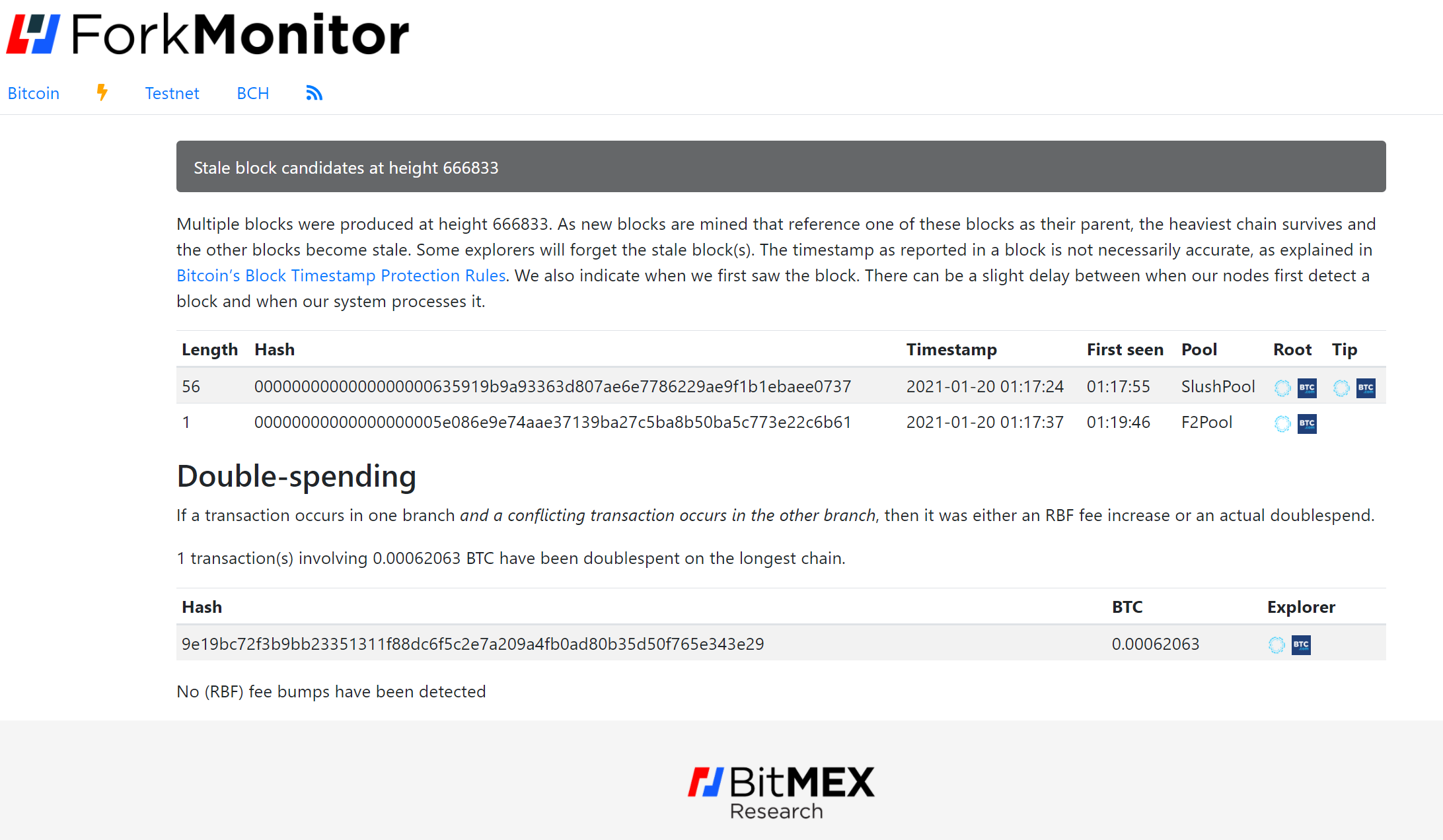
[출처: 비트멕스 리서치]
The bitcoin double payment issue is re-igniting as BitMEX Research revealed on January 20 (local time) that a stale block occurred at a block height of 660,6833. However, Bitcoin was designed in a structure where double payments do not ultimately occur.
#Double payment and RBF
Double payment refers to a problem that arises when a single transaction occurs twice. For example, when A sends 1 million won to B and C each, under normal circumstances, A’s balance should be reduced by 2 million won. However, when a double payment problem occurs, the balance is reduced by only KRW 1 million because a single transaction is processed in duplicate. In this case, there will be a major obstacle to financial security and transactions.
Meanwhile, this bitcoin double payment issue emerged as 0.0006BTC overlapped in the same block at the block height of 660,6833. It was found that the reason for the duplication was that an RBF (Replace by Fee) transaction occurred. RBF is a phenomenon that occurs when a lower fee is canceled and a higher fee is sent during the bitcoin transfer process. Sending bitcoins with a low fee delays the transmission time, so it is a common behavior of market participants for fast transmission. In particular, the number of RBF frequencies is increasing further as the transmission time is often delayed due to the recent rapid increase in transactions.
#Two duplicate transactions in the same block… Will double payments happen?
The problem is when two transactions are duplicated in one block at the same block height. In this case, the Bitcoin blockchain recognizes the transaction of the party that the majority of miners agree on as correct. For example, if two 0.0006 BTC transactions occur in duplicate, only one transaction recognized by more miners is normally processed.
If so, how will the remaining one transaction that has not been selected by the majority be processed? In the blockchain community, these blocks are called stale blocks. Chain separation occurs in the process of acknowledging only one transaction, and the chain that has not been selected is called a stale block. In the Korean community, it is more commonly used as an orphaned block instead of a stale block in the sense of an abandoned block.
Of course, if the results of these procedures are immediately implemented, the transactions of participants who made transactions during the period may be invalidated. It is possible that many market participants will suffer damage in this process. Also, you need time to check which transaction is the right one. To prevent this, miners usually go through a process of reviewing which of the two duplicate transactions is correct while about 6 blocks are generated. This is called’confirmation’ by miners. When the verification for 1 block is completed, it is said that 1 confirmation is completed. Even when a duplicate transaction occurred this time by RBF, the miners completed normal chain separation after 6 confirmations. Through this system, miners who play the role of bitcoin block validators have not created a double payment problem until now, and have been able to prevent transaction invalidation issues that may occur in the process of resolving double payment.
Reporter Park Sanghyuk [email protected]
